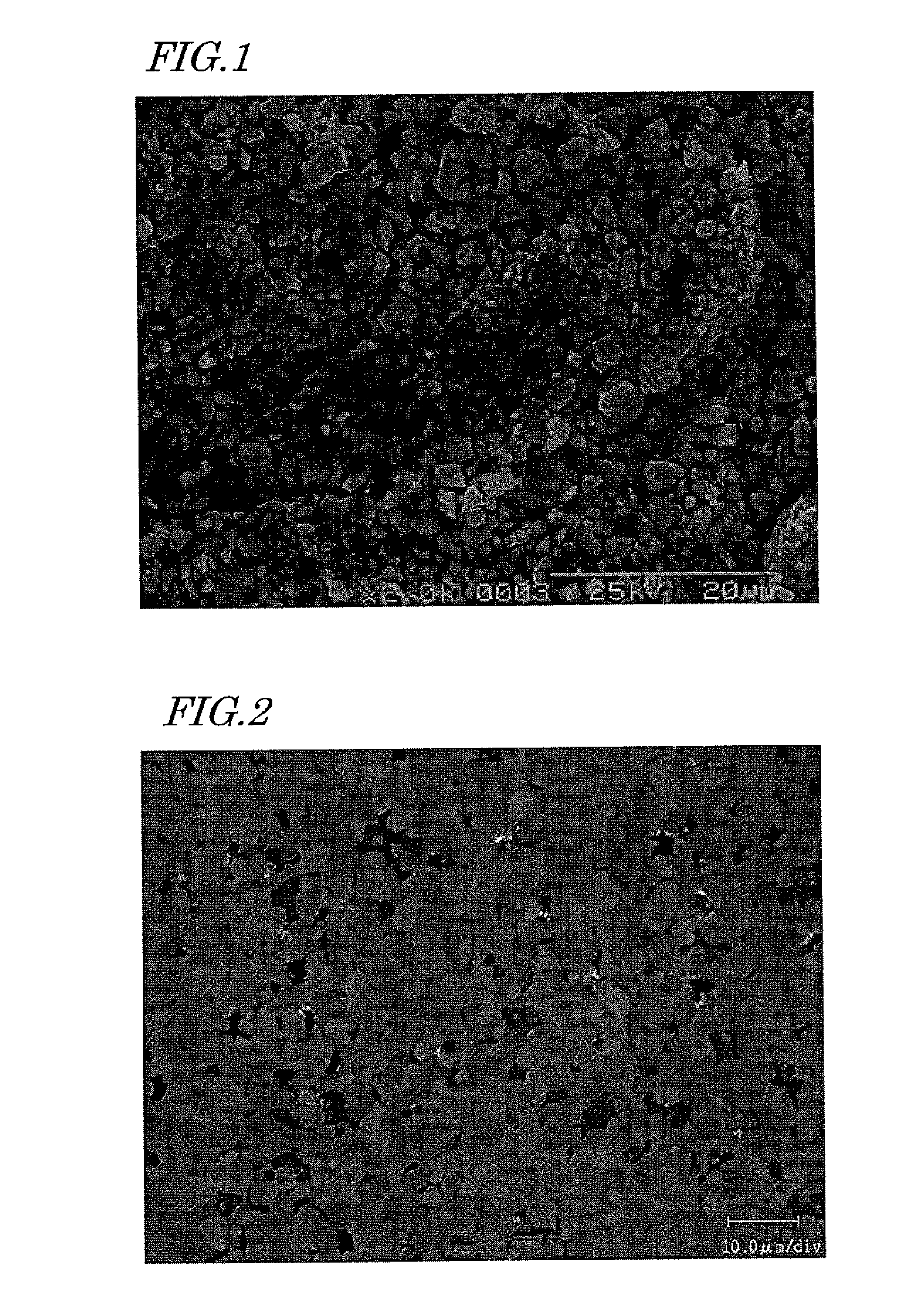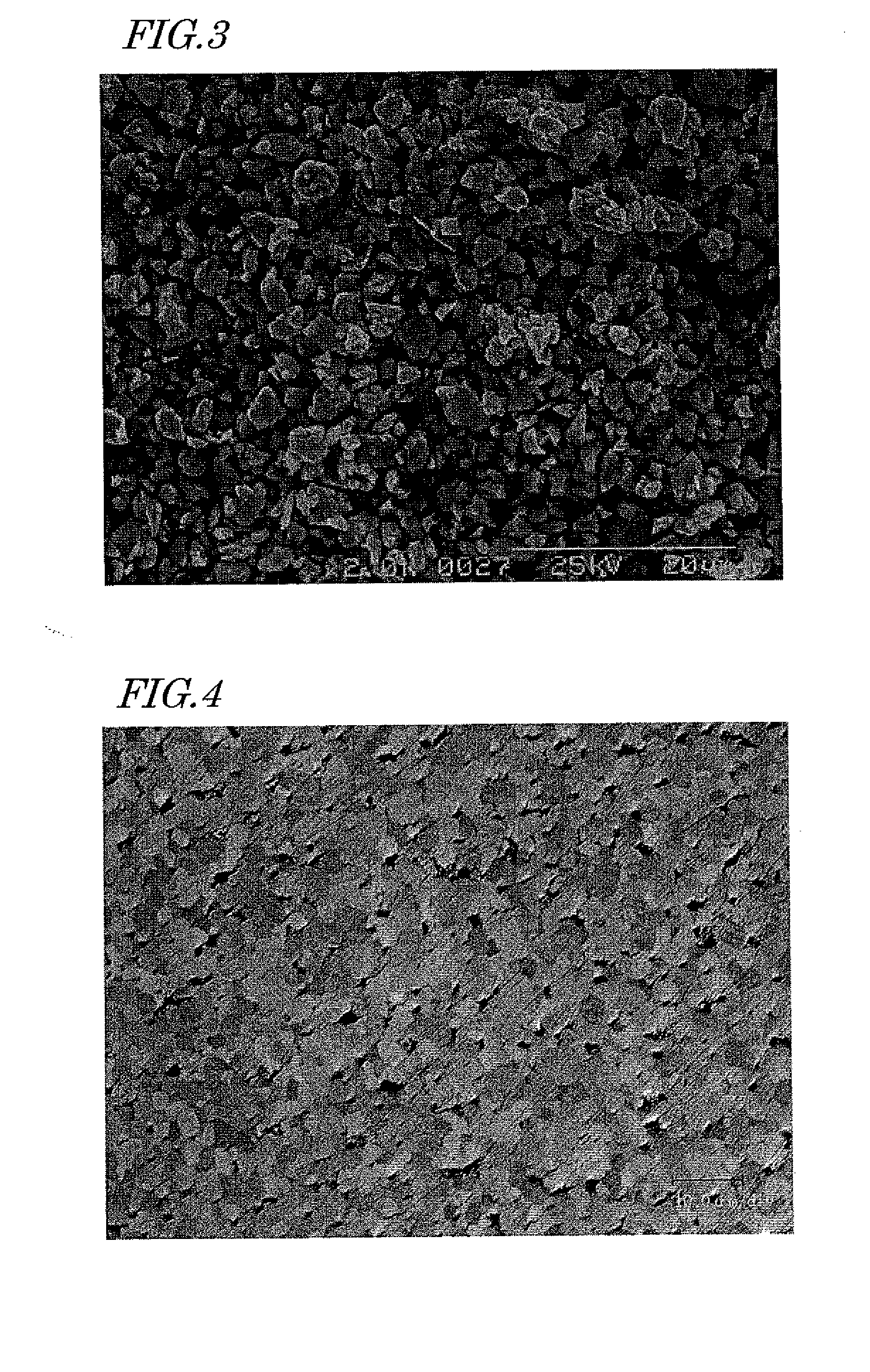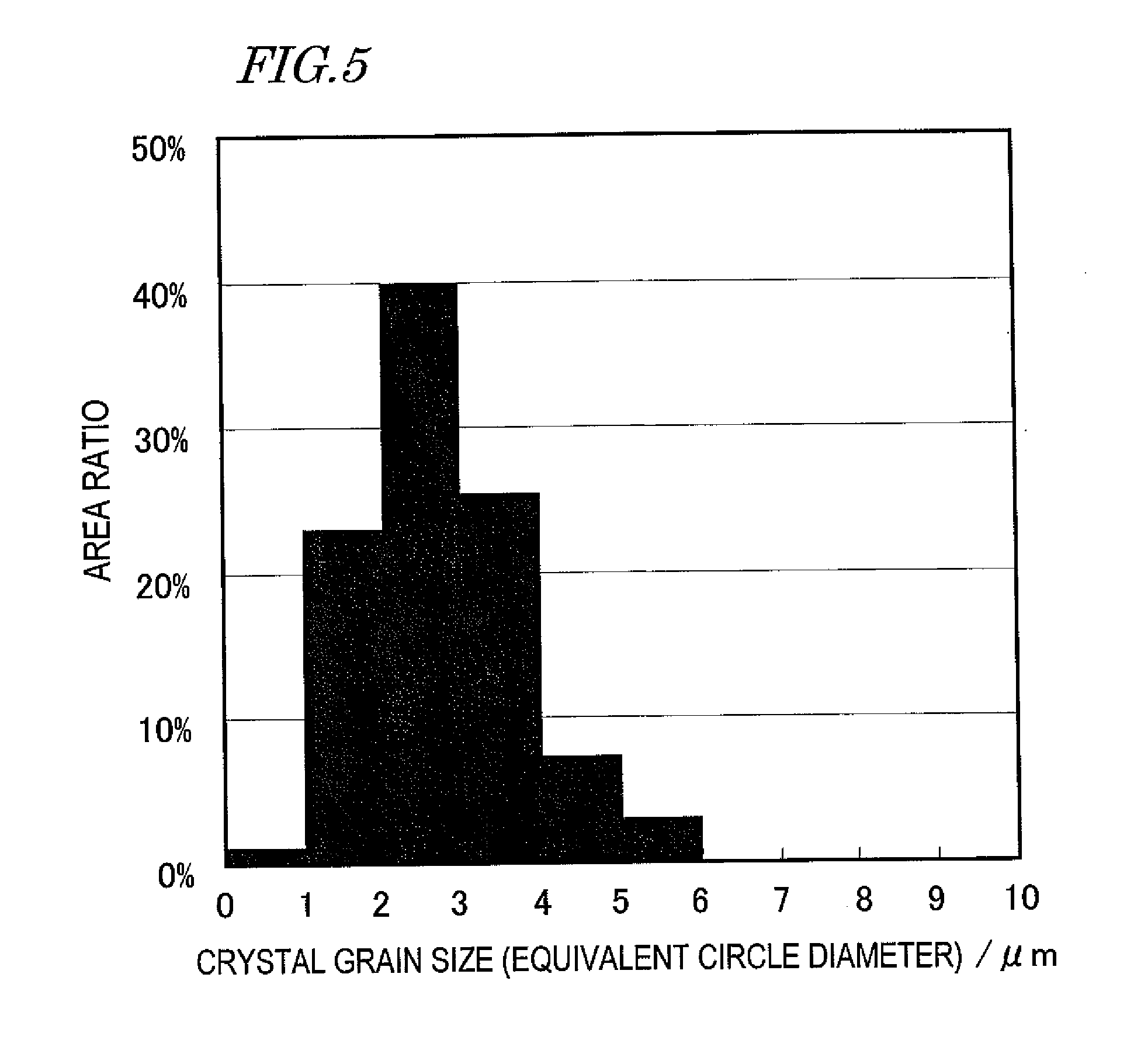R-t-b-type sintered magnet and method for production thereof
a sintered magnet and r-t-b technology, applied in the field of r-t-b-based sintered magnets, can solve the problems of increased r mole fraction in material alloys, decreased remanence, and inability to produce liquid phases smoothly, etc., to achieve excellent thermal resistance, increase coercivity, and high remanence
- Summary
- Abstract
- Description
- Claims
- Application Information
AI Technical Summary
Benefits of technology
Problems solved by technology
Method used
Image
Examples
example 1
[0107]A melt of a material alloy was obtained by mixing together Pr and Nd with a purity of 99.5% or more, Tb and Dy with a purity of 99.9% or more, electrolytic iron and low-carbon ferroboron as main ingredients, along with additive elements (Co and / or M) added as either pure metals or alloys with Fe, and then melting the mixture. The melt thus obtained was quenched by strip casting process, thereby obtaining a plate alloy with a thickness of 0.1 to 0.3 mm.
[0108]Next, that alloy was decrepitated with hydrogen in a pressurized hydrogen atmosphere, heated to 600° C. within a vacuum, and then cooled. Thereafter, the alloy was classified with a sieve to obtain a coarse alloy powder with particle sizes of 425 μm or less.
[0109]Subsequently, the coarse alloy powder was subjected to a dry pulverization process using a jet mill within a nitrogen gas jet, of which the oxygen concentration was controlled to 50 ppm or less, thereby obtaining an intermediate finely pulverized powder with a part...
example 2
[0118]A melt of a material alloy was obtained by mixing together Pr and Nd with a purity of 99.5% or more, Tb and Dy with a purity of 99.9% or more, electrolytic iron and pure boron as main ingredients, along with (Co and / or M) added as either pure metals or alloys with Fe, and then melting the mixture. The melt thus obtained was quenched by strip casting process, thereby obtaining a plate alloy with a thickness of 0.1 to 0.3 mm.
[0119]Next, that alloy was decrepitated with hydrogen in a pressurized hydrogen atmosphere, heated to 600° C. within a vacuum, and then cooled. Thereafter, the alloy was classified with a sieve to obtain a coarse alloy powder with particle sizes of 425 μm or less.
[0120]Subsequently, the coarse alloy powder was subjected to a dry pulverization process using a jet mill with a rotary classifier within an Ar gas jet. In this process step, the rotational frequency of the classifier was varied and the pressure of the pulverization gas was set to be 0.98 MPa, which...
example 3
[0130]A melt of a material alloy was obtained by mixing together Pr and Nd with a purity of 99.5% or more, Tb and Dy with a purity of 99.9% or more, electrolytic iron and pure boron as main ingredients, along with additive elements (Co and / or M) added as either pure metals or alloys with Fe, and then melting the mixture. The melt thus obtained was quenched by strip casting process, thereby obtaining a plate alloy with a thickness of 0.1 to 0.3 mm.
[0131]Next, that alloy was decrepitated with hydrogen in a pressurized hydrogen atmosphere, heated to 600° C. within a vacuum, and then cooled. Thereafter, the alloy was classified with a sieve to obtain a coarse alloy powder with particle sizes of 425 μm or less.
[0132]Subsequently, the coarse alloy powder was subjected to a dry pulverization process using a jet mill within an He gas jet, thereby obtaining a fine powder having a particle size D50 of 2.8 μm or less and an oxygen content of 0.2 mass % or less. This particle size was obtained ...
PUM
| Property | Measurement | Unit |
|---|---|---|
| equivalent circle diameters | aaaaa | aaaaa |
| equivalent circle diameters | aaaaa | aaaaa |
| particle size | aaaaa | aaaaa |
Abstract
Description
Claims
Application Information
 Login to View More
Login to View More - R&D
- Intellectual Property
- Life Sciences
- Materials
- Tech Scout
- Unparalleled Data Quality
- Higher Quality Content
- 60% Fewer Hallucinations
Browse by: Latest US Patents, China's latest patents, Technical Efficacy Thesaurus, Application Domain, Technology Topic, Popular Technical Reports.
© 2025 PatSnap. All rights reserved.Legal|Privacy policy|Modern Slavery Act Transparency Statement|Sitemap|About US| Contact US: help@patsnap.com



